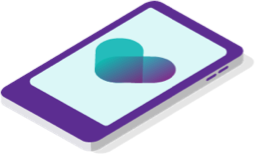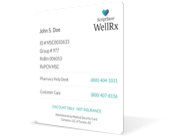Copyright 2025
Medical Security Card Company, LLC
All Rights Reserved
We take the privacy of your personal information seriously. By signing up I agree to WellRx's terms of use and privacy policy.
By Rosanna Sutherby, PharmD
January 08, 2021
From 1999 through 2018, more than 450,000 people died in the United States due to opioid overdoses. Deaths by opioid overdose were at least four times higher in 2018 than in 1999. The United States is experiencing an opioid crisis. However, given that about 11% of adults have daily pain, healthcare providers are faced with the task of providing adequate pain management while addressing an opioid overdose epidemic.
The opioid overdose epidemic in the United States developed in three waves. The first wave started in the 1990s and primarily involved prescription opioid medications. In 2010, the second wave of the epidemic began as heroin overdose deaths quickly increased. The third wave started in 2013, when overdose deaths involving illegally manufactured synthetic opioids escalated.
To reverse this opioid crisis, providers must find ways to effectively manage pain while preventing opioid use disorder and opioid overdose.
Prescription opioids are generally prescribed after an injury or after surgery. They can be used to treat moderate to severe pain and to treat cancer pain. Opioids commonly prescribed for pain management include the following:
When prescribing opioids, your provider must consider several factors, including your total daily dose of opioids. Your total daily dose of opioids is referred to as your morphine milligram equivalents (MME) per day. When starting an opioid, your prescriber must use the lowest effective dose to treat your pain. The Centers for Disease Control and Prevention (CDC) recommends that a healthcare provider evaluate the benefits versus the risks when considering whether to increase a patient's pain medication dose to greater than 50 MME per day. Prescribers should avoid doses greater than 90 MME per day unless a justifiable reason exists to use this high dose.
To help you understand how your MME is calculated, the following list shows commonly prescribed opioids and their MME conversion factors:
To determine your daily MME, your prescriber multiplies your total daily dose of opioid medication in milligrams by the conversion factor. The result is your daily MME. For example, if you are taking oxycodone 5 mg 4 times a day, your daily MME is 30 (5 mg x 4 = 20 mg and 20 x 1.5 = 30).
Prescription opioids have been used to treat chronic pain. However, research shows that opioids are no more effective than nonopioid pain medication in managing long-term noncancer pain. Moreover, studies conducted during the FDA approval process for several opioid medications show no evidence that opioids are effective for managing pain longer than three months.
In some instances, however, your prescriber may determine that you would benefit from opioid pain medication for chronic pain. If opioids are necessary, the CDC makes the following recommendations for using opioids to treat chronic pain:
To combat the opioid crisis and mitigate the potential for opioid misuse and addiction, prescribers are turning to alternatives to opioids for chronic pain management.
Examples of nonopioid medications your prescriber may use for chronic pain management include the following:
The U.S. Surgeon General advises having naloxone (Narcan, Evzio) on hand if you are taking high doses (MME of 50 or higher) of prescription opioid medication. Naloxone is an opioid antagonist that reverses the effects of an opioid overdose. It can save your life if you accidentally take too much opioid medication. Your doctor may give you a prescription for naloxone along with your pain medicine. However, in many states, you can get naloxone without a prescription at a pharmacy near you. Be sure your loved ones and caretakers know where you store your naloxone and how to use it in case of an emergency.
Whether you are taking opioid or nonopioid pain medication, you want to get the lowest prescription price for your medicine. Before heading to your local pharmacy, be sure to compare prescription prices using a ScriptSave WellRx prescription savings card or download the mobile app today to save up to 80% off the average retail price.
Rosanna Sutherby is a freelance medical writer who has been a practicing pharmacist in her community for close to 20 years. She obtained her Doctor of Pharmacy from Nova Southeastern University in Ft. Lauderdale, FL. She utilizes her clinical training in the pharmacy, where she helps patients manage disease states such as asthma, diabetes, heart disease, hypertension, and many others. Dr. Sutherby reviews and recommends drug regimens based on patients’ concurrent conditions and potential drug interactions.
References:
https://www.cdc.gov/drugoverdose/epidemic/index.html
https://www.cdc.gov/drugoverdose/prescribing/guideline.html
https://www.cdc.gov/drugoverdose/prescribing/guideline.html
https://www.cdc.gov/drugoverdose/pdf/guidelines_at-a-glance-a.pdf
https://www.ncbi.nlm.nih.gov/pmc/articles/PMC5885909/
https://www.ncbi.nlm.nih.gov/pmc/articles/PMC5939920/
https://www.hhs.gov/surgeongeneral/priorities/opioids-and-addiction/naloxone-advisory/index.html

For your convenience, use the ScriptSave® WellRx mobile app. Now savings are well in hand, right at the pharmacy counter. Save on your family's prescription medicines.
Learn More
Your choice. Get a ScriptSave WellRx Savings Card. Or Download the free mobile app from the App Store or Google Play Store
Get A Card
ScriptSave WellRx Grocery Guidance leverages leading-edge nutritional data science to help you know which food products on your grocery store shelf are truly good for YOU.
Healthy Foods For YouTags:

December 01, 2021

January 04, 2021

December 21, 2020
You need to log into the site to use this feature
This feature requires registration. Sign up or log in to your free WellRx account to gain access to this and other tools to help make managing your medications and wellness easier.
Benefits Include:
 Store & manage your medication list
Store & manage your medication list
 Medication pricing updates
Medication pricing updates
 Medication information
Medication information
 Pill & refill reminders
Pill & refill reminders
 Medication journal & mood log
Medication journal & mood log
This feature requires registration. Sign up or log in to your free WellRx account to gain access to this and other tools to help make managing your medications and wellness easier.
Benefits Include:
 Store & manage your medication list
Store & manage your medication list
 Medication pricing updates
Medication pricing updates
 Medication information
Medication information
 Pill & refill reminders
Pill & refill reminders
 Medication journal & mood log
Medication journal & mood log
You will be redirected to your program in 5 seconds.
Our Terms and Conditions and Privacy Policy have recently been updated.
By declining you will be logged out of your account